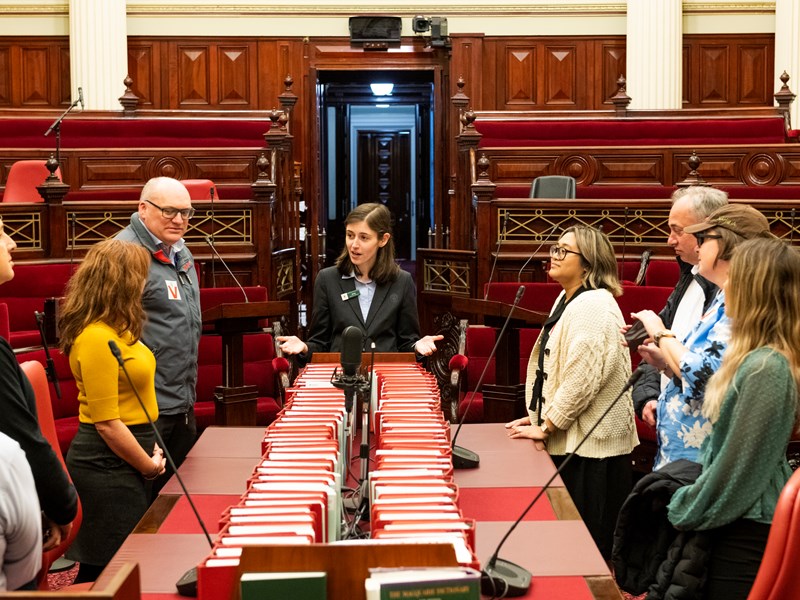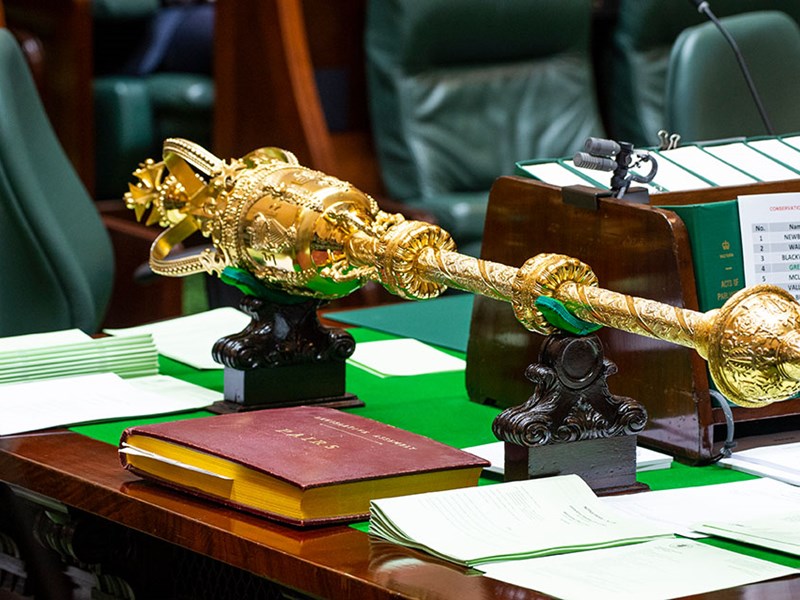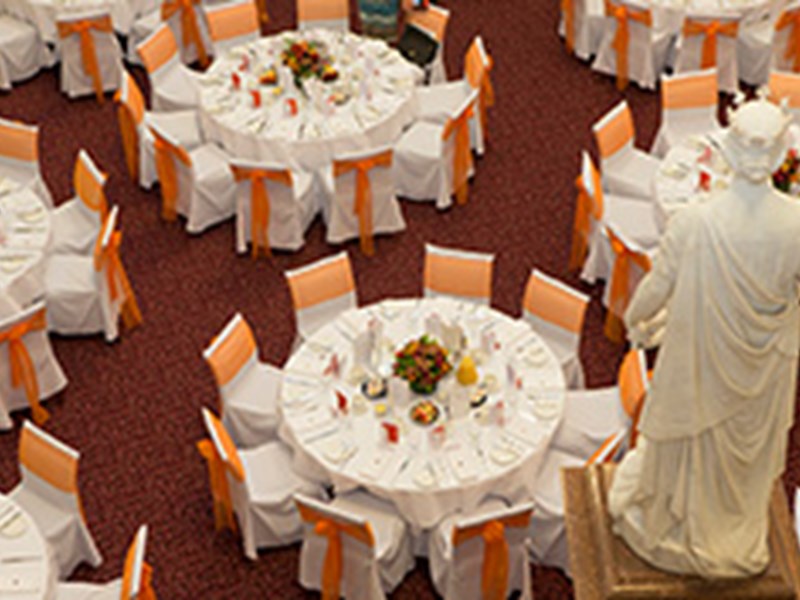The federal years 1901-1927
On 1 January 1901 Australia became a nation. With a national capital yet to be established, the new Federal Parliament was housed at Victoria’s Parliament House from 1901 to 1927.
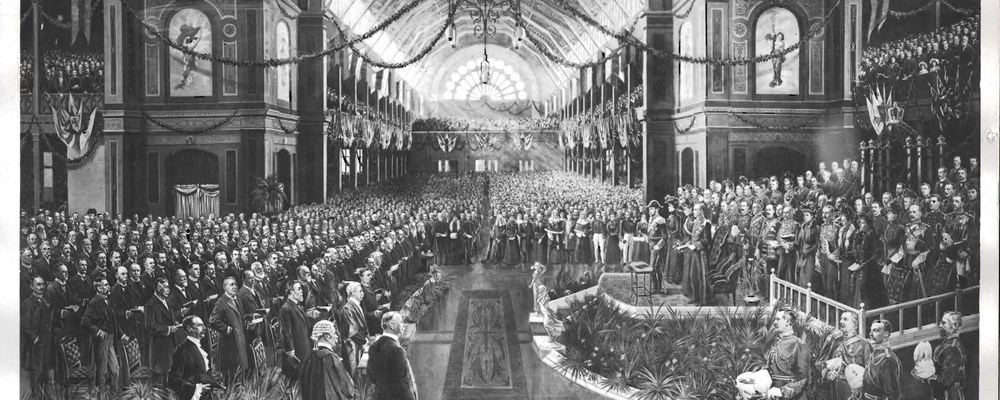
“ When a guest came to his house he was generally offered the best chair, but he usually refused to take it. Our federal guests had taken the very best in the place. ”
Sir John McIntyre, Member for Maldon, Victorian Parliamentary Debates, 27 June 1901.
On this page
A temporary measure
Australia was proclaimed a nation on 1 January 1901, an event known as Federation. The new country had a new Federal Parliament. But where would it meet?
There was fierce debate over the location of the new Australian capital. It was finally agreed that it would be located within the borders of New South Wales, at least 100 miles (160 km) outside Sydney. But it would be over a decade before an exact site was agreed upon.
In the meantime, it was decided that Melbourne would act as the temporary national capital and that the Federal Parliament would meet at Victoria’s Parliament House on Spring Street.
The Victorian Parliament vacated the building and moved to the Royal Exhibition Building.
The Federal Parliament did not pay rent, but would finance repairs, maintenance, and electricity. As a bonus, they were given Victorian Parliament’s original wooden mace. This meant that the House of Representatives had a traditional symbol of parliamentary authority.
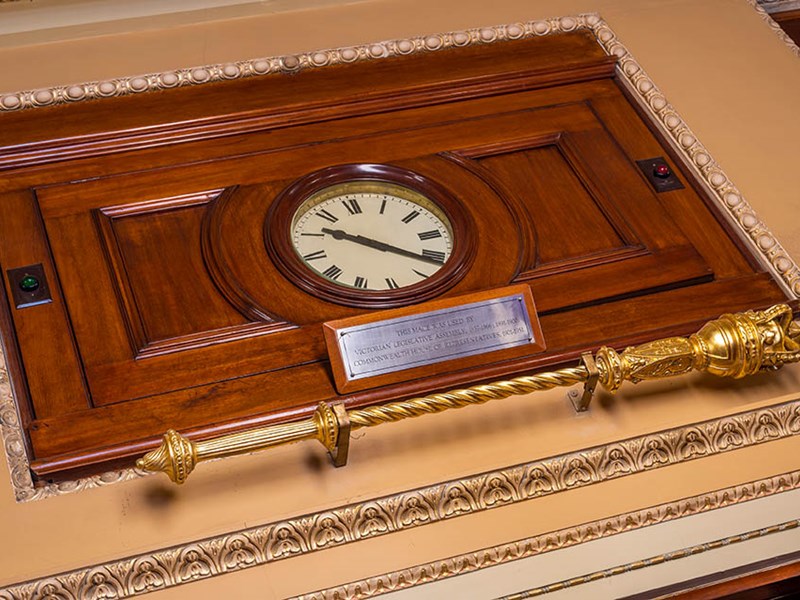
The official opening of the first Federal Parliament was held at the Royal Exhibition Building on 9 May 1901. The following day the first sitting was held at Parliament House.
The Victorian Parliament hoped the arrangement would last three to five years. It would be 26 years before they returned to Parliament House.

Shaping a nation
The Federal Parliament debated and passed 923 laws in Melbourne’s Parliament House. These laws shaped the nation and many continue to influence our lives today.
The White Australia PolicyThis infamous law was one of the first passed by our Federal Parliament. The Immigration Restriction Act 1901 formed the basis of the White Australia Policy, which defined Australia as white, and influenced Indigenous Australian and immigration policy for the next 70 years. The Act was the expression of underlying racist attitudes and was intended to keep a wide range of ‘undesirable’ people out of the country.
The Commonwealth Franchise Act 1902 gave women over the age of 21 the right to vote in federal elections. However, it excluded all ‘aboriginal native[s] of Australia, Africa, Asia or the Islands of the Pacific except New Zealand’ from voting unless they were allowed to vote in state elections. The right to vote in Commonwealth elections was finally extended to all Indigenous Australians in 1962.
Since its invention, radio has been an essential service in rural and regional areas. The Wireless Telegraphy Act 1905 created a broadcast system controlled by the Federal Parliament but with the content was delivered by privately owned stations. The Australian Government was given the authority to license stations, determine broadcast frequencies and set guidelines for content
With the passing of the Invalid and Old Age Pension Acts in 1908 and 1909, pensions were available for older Australians and those permanently unable to work due to disability. This set the model for Australian social security for the next 100 years. While the Acts were lifechanging for many, people of particular racial backgrounds were ineligible for the scheme. The racial stipulations were removed over the next 60 years.
The Commonwealth Electoral Act 1911 introduced compulsory enrolment for elections. In 1924 compulsory voting was introduced. Australia is one of a handful of countries that requires its citizens to vote. Turnout has never been lower than 90%.
In response to the outbreak of World War I, the Federal Parliament passed the War Precautions Act 1914. This Act was used to decide on more than a hundred regulations, including restrictions to freedom of speech, public gatherings and the press. Regulations were also issued to intern residents, citizens of ‘enemy’ origin, and to fix the price of basic food items.
The issue of conscription was fiercely debated. Two plebiscites on the issue led to the split of the Australian Labor Party, the creation of a new political party, and bitter divisions between supporters and opponents. The first conscription plebiscite in 1916 was narrowly defeated. The defeat of the second plebiscite in 1917 closed the issue for the remainder of the war.
The 1919 peace treaty officially ended World War I. It was the first treaty signed by Australia and the first negotiated with the participation of Australian delegates.
Meanwhile, at the Royal Exhibition Building…
While Federal Parliament were sitting at Melbourne’s Parliament House, the Victorian Parliament took up residence in the western annexe of the Royal Exhibition Building. The annexe was demolished in 1967.
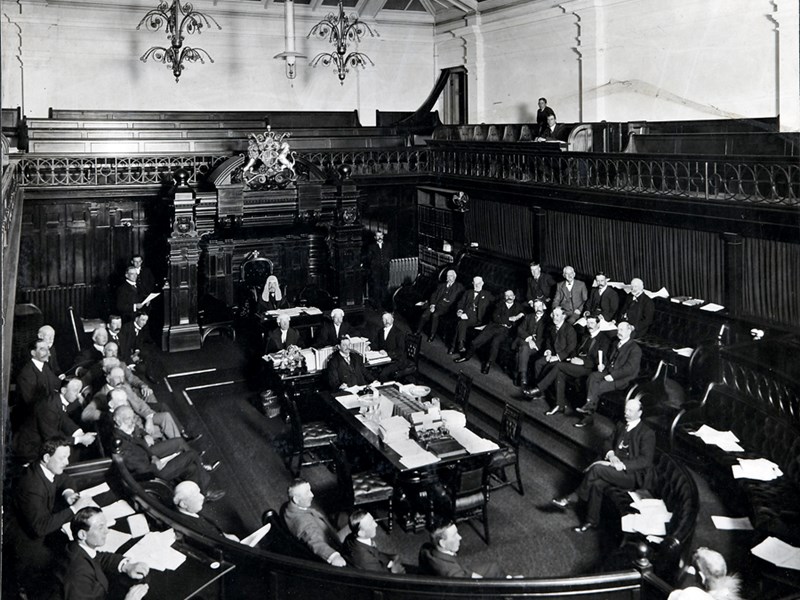
Victorian members were unhappy with their new temporary location. They complained that their offices were airless, and the corridors were draughty. Members described the damp air as ‘life-threatening’ and ruined their paperwork. In winter the building was freezing, while in summer it was unbearably hot. In the summer of 1902-03 temperatures topped 34°C in the Royal Exhibition Building. In sympathy, the Commonwealth Parliament made Parliament House available to State Parliament for forty sitting days.
Worst of all, the Victorian Parliament had been separated from its beloved parliamentary library. Though there was a reading room at the Royal Exhibition Building, it only kept newspapers, reports and some reference works. Members argued that they could not do proper research for their debates. In mid-1904 it was decided to turn the reading room into an official library with its own collection.
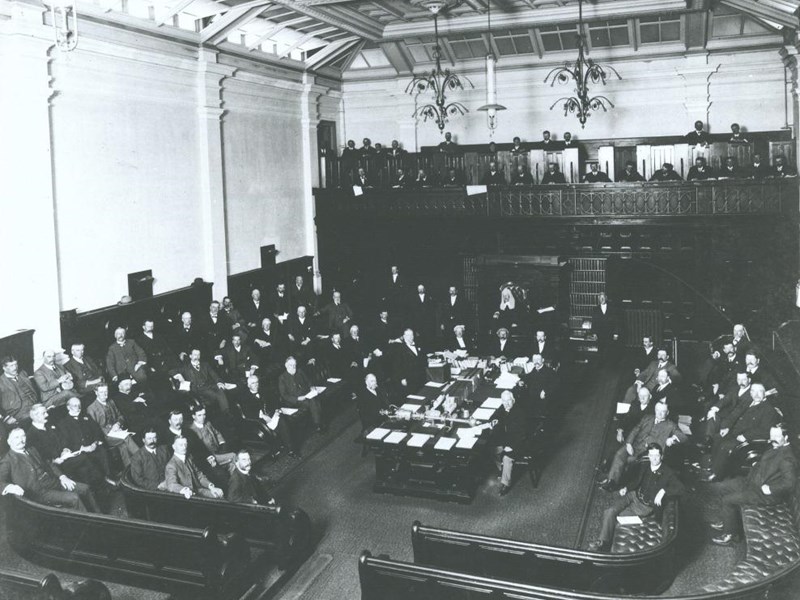
While the Victorian Parliament took up the western annexe, other parts of the Exhibition Building were still used for concerts, art exhibitions and fetes. For most of 1919 the main part of the building was converted into a hospital, to help cope with the great influenza epidemic. The Australian War Memorial occupied the building from 1921 until 1925, and a six-day bicycle race took place on the sports oval in 1912.
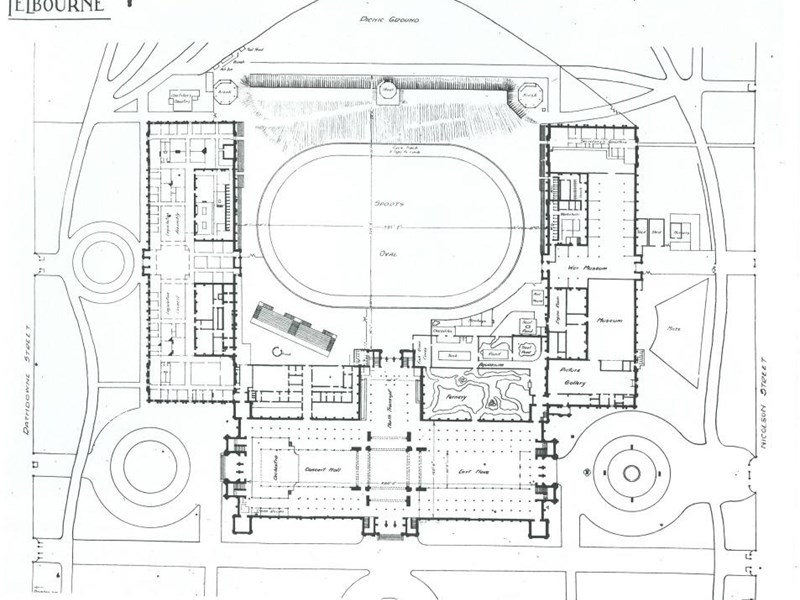
A fond farewell?
In 1927 the Federal Parliament finally left Melbourne for its new home in Canberra. On 6 July that year, the Victorian Parliament officially returned to Spring Street.
There had been some changes to the building since 1901. Sewerage was now connected, and an early form of air-conditioning had been installed. The Legislative Council Chamber had new electric lighting, replacing crystal chandeliers which were difficult to clean and maintain. The Commonwealth had also paid for much-needed repainting and repairs throughout the building.
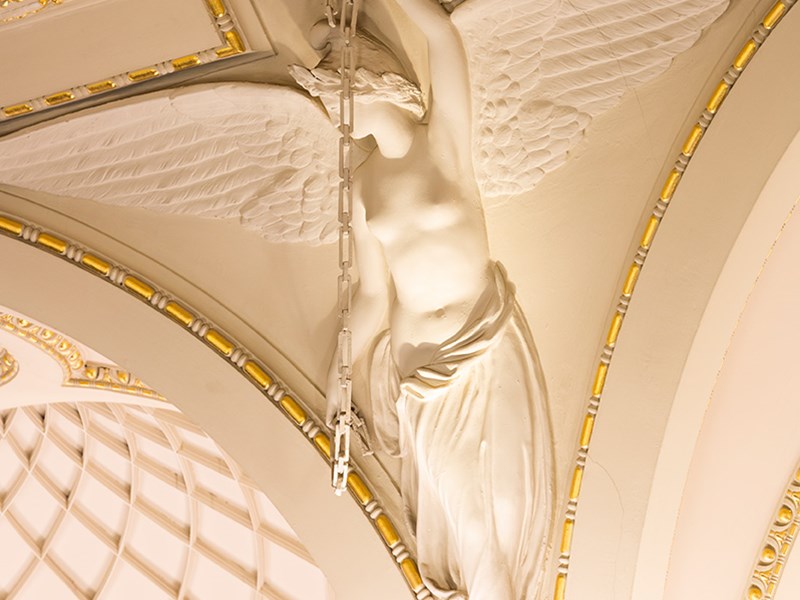
Not all the changes were positive. Staff were horrified to discover that around 1,400 books were missing from the library, including many first editions. Two hundred of these were acknowledged as being worthy of replacement by the Commonwealth parliamentary library, which agreed to provide ‘good editions’ in their place.
A final gift
As a thank you for loan of the building, the Federal Parliament granted the State of Victoria a sum of £50,000. The Federal Parliamentary Committee hoped that the gift might fund construction of a ‘symbolic sculpture’ to honour their time in Melbourne.
After some debate, the state Government approved a plan to construct refreshment rooms in the east wing of the building. This decision was met with some surprise, with one federal member commenting that, ‘it is not desirable that the addition of a kitchen to these premises should be regarded as a fitting memorial of our occupation of it.’
Construction of the refreshment rooms was completed in 1929, which would be the last substantive addition or alteration to State Parliament House in the 20th century.
“ We leave this building with sincere regret, and we shall always feel proud of our participation in the many historic events with which it is associated. When the history of Australia comes to be written the records of this building will fill many an interesting page. ”
Hon. Sir Littleton Groom, Speaker of the House of Representatives, at the final sitting of the Federal Parliament in Melbourne, 24 March 1927.
